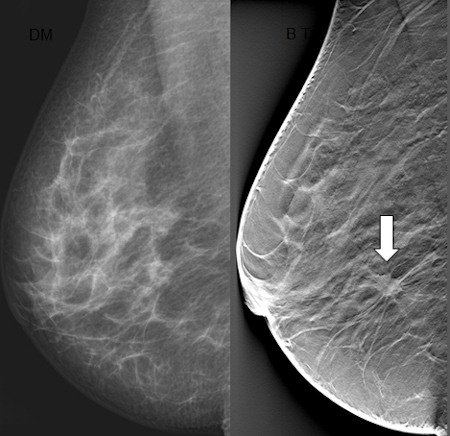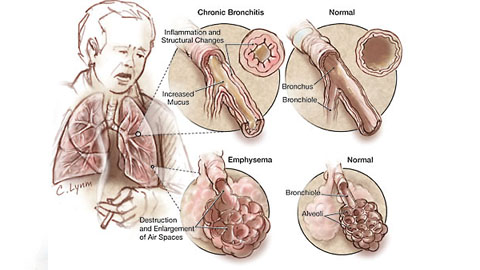New Type 2 Diabetes Drug Onglyza Approved
.jpg)
|
The FDA today approved Onglyza, a once-daily treatment for type 2 diabetes to be taken in combination with diet and exercise.
Onglyza, made by Bristol-Myers Squibb and distributed by Bristol-Myers Squibb and AstraZeneca Pharmaceuticals, was tested in diabetes patients at relatively low risk of heart disease. The FDA approval requires Bristol-Myers Squibb to conduct a postmarketing study to evaluate the drug’s heart safety in higher-risk patients.
Onglyza carries the generic name saxagliptin. It belongs to a class of type 2 diabetes drugs called DPP-4 inhibitors. The first drug in this class, Merck’s Januvia, was approved in 2006. Like Onglyza, Januvia is taken once daily and is to be used in combination with diet and exercise.
Another DPP-4 inhibitor, Takeda’s alogliptin, was rejected by the FDA last month. The U.S. regulatory agency said the company has to provide more data on heart risks before it can be approved. Takeda has said these additional studies will take two years.
Recurring memory traces boost long-lasting memories

|
Bonn, Germany, December 5th, 2013 - While the human brain is in a resting state, patterns of neuronal activity which are associated to specific memories may spontaneously reappear. Such recurrences contribute to memory consolidation - i.e. to the stabilization of memory contents. Scientists of the DZNE and the University of Bonn are reporting these findings in the current issue of The Journal of Neuroscience. The researchers headed by Nikolai Axmacher performed a memory test on a series of persons while monitoring their brain activity by functional magnetic resonance imaging (fMRI). The experimental setup comprised several resting states including a nap inside a neuroimaging scanner. The study indicates that resting periods can generally promote memory performance.
Depending on one’s mood and activity different regions are active in the human brain. Perceptions and thoughts also influence this condition and this results in a pattern of neuronal activity which is linked to the experienced situation. When it is recalled, similar patterns, which are slumbering in the brain, are reactivated. How this happens, is still largely unknown.
The prevalent theory of memory formation assumes that memories are stored in a gradual manner. At first, the brain stores new information only temporarily. For memories to remain in the long term, a further step is required. „We call it consolidation“, Dr. Nikolai Axmacher explains, who is a researcher at the Department of Epileptology of the University of Bonn and at the Bonn site of the DZNE. “We do not know exactly how this happens. However, studies suggest that a process we call reactivation is of importance. When this occurs, the brain replays activity patterns associated with a particular memory. In principle, this is a familiar concept. It is a fact that things that are actively repeated and practiced are better memorized. However, we assume that a reactivation of memory contents may also happen spontaneously without there being an external trigger.”
TB Vaccine May Work Against Multiple Sclerosis

|
A vaccine normally used to thwart the respiratory illness tuberculosis also might help prevent the development of multiple sclerosis, a disease of the central nervous system, a new study suggests.
In people who had a first episode of symptoms that indicated they might develop multiple sclerosis (MS), an injection of the tuberculosis vaccine lowered the odds of developing MS, Italian researchers report.
“It is possible that a safe, handy and cheap approach will be available immediately following the first [episode of symptoms suggesting MS],” said study lead author Dr. Giovanni Ristori, of the Center for Experimental Neurological Therapies at Sant’Andrea Hospital in Rome.
But, the study authors cautioned that much more research is needed before the tuberculosis vaccine could possibly be used against multiple sclerosis.
Higher case load lowers cost of repairing bones that protect eye

|
Adding to evidence that “high-volume” specialty care in busy teaching hospitals leads to efficiencies unavailable in community hospitals, a new study by Johns Hopkins researchers finds that patients undergoing repair of traumatic eye socket injuries at its busy academic medical center fared just as well at far less cost than those treated at all other Maryland hospitals.
The study’s findings, the researchers say, suggest that major cost savings can be had from economies of scale such as utilization of supplies, spending less time in the operating room and potentially from more streamlined pre- and post-operative processes when patients seek eye trauma care at a hospital that specializes in those procedures.
“The presumption has always been that treatment at teaching hospitals is inherently more expensive given the specialized care they provide and the costs of their graduate medical education responsibilities. However, somewhat counter-intuitively, our research shows it’s actually significantly less expensive and just as effective to treat these types of injuries at academic medical centers,” says Michael P. Grant, M.D., Ph.D., director of the Eye and Orbital Trauma Center at the Wilmer Eye Institute at Johns Hopkins. “The cost of health care is on everyone’s minds. Maybe a good way to save money and stretch our health care dollars would be to direct even more patients to the specialists who frequently treat these injuries.”
Grant led the study published in the December issue of the journal Ophthalmology.
HIV-1 movement across genital tract cells surprisingly enhanced by usurping antibody response

|
Infectious disease researchers have identified a novel mechanism wherein HIV-1 may facilitate its own transmission by usurping the antibody response directed against itself. These results have important implications for HIV vaccine development and for understanding the earliest events in HIV transmission.
In a study appearing in the November issue of PLoS Pathogens, Dr. Donald Forthal of UC Irvine and colleagues studied the mechanisms employed by the virus to cross genital tract tissue and establish infection. Since cervicovaginal fluid is acidic and HIV-1 in cervicovaginal fluid is likely coated with antibodies, they explored the effect of low pH and HIV-1-specific antibodies on transcytosis, the movement of HIV-1 across tight-junctioned epithelial cells.
The researchers found that the combination of HIV-1-specific antibodies and low pH enhanced transcytosis as much as 20-fold.
Tuberculosis: Nature has a double-duty antibiotic up her sleeve

|
Technology has made it possible to synthesize increasingly targeted drugs. But scientists still have much to learn from Mother Nature. Pyridomycin, a substance produced by non-pathogenic soil bacteria, has been found to be a potent antibiotic against a related strain of bacteria that cause tuberculosis. The EPFL scientists who discovered this unexpected property now have a better understanding of how the molecule functions. Its complex three-dimensional structure allows it to act simultaneously on two parts of a key enzyme in the tuberculosis bacillus, and in doing so, dramatically reduce the risk that the bacteria will develop multiple resistances. The researchers, along with their colleagues at ETH Zurich, have published their results in the journal Nature Chemical Biology.
Stewart Cole, director of EPFL’s Global Health Institute, led a team that discovered the anti-tuberculosis effect of pyridomycin in 2012. By inhibiting the action of the “InhA” enzyme, pyridomycin literally caused the thick lipid membrane of the bacterium to burst. Now the scientists understand how the molecule does this job.
Dual anti-mutation ability
The tuberculosis bacillus needs the InhA enzyme along with what scientists refer to as a “co-factor,” which activates the enzyme, in order to manufacture its membrane. The scientists discovered that pyridomycin binds with the co-factor, neutralizing it.
Our pupils adjust as we imagine bright and dark scenes

|
Conjuring up a visual image in the mind - like a sunny day or a night sky - has a corresponding effect on the size of our pupils, as if we were actually seeing the image, according to new research.
These findings, published in Psychological Science, a journal of the Association for Psychological Science, suggest that the size of our pupils is not simply a mechanistic response, but one that also adjusts to a subjective sense of brightness.
“Visual imagery is a private and subjective experience which is not accompanied by strongly felt or visible physiological changes,” explains psychological scientist and lead researcher Bruno Laeng of the University of Oslo. “It is a particularly difficult topic to research, as years of controversy about the nature of mental imagery testifies.”
Along with co-author Unni Sulutvedt, also from the University of Oslo, Laeng conducted a series of experiments to see whether they could tap into subjective mental imagery by monitoring pupillary size with an eye-tracking device.
Breast tomosynthesis increases cancer detection and reduces recall rates

|
Researchers have found that digital breast tomosynthesis (DBT) led to reduced recall rates and an increase in cancer detection in a large breast cancer screening program. The results of this study were presented today at the annual meeting of the Radiological Society of North America (RSNA).
Digital mammography is the gold standard for breast cancer screening, but may yield suspicious findings that turn out not to be cancer. These false-positive findings are associated with a higher recall rate, or the rate at which women are called back for additional imaging or biopsy.
Digital breast tomosynthesis has shown promise at reducing recall rates in all groups of patients, including younger women and women with dense breast tissue. Tomosynthesis is similar to mammography in that it relies on ionizing radiation to generate images of the breast. However, unlike conventional mammography, tomosynthesis allows for three-dimensional (3-D) reconstruction of the breast tissue, which can then be viewed as sequential slices through the breast.
Because DBT technology is relatively new, it is typically used only as a supplemental screening tool, but since October 2011, every patient screened for breast cancer at Hospital of the University of Pennsylvania (HUP) in Philadelphia has been screened using DBT, according to Emily F. Conant, M.D., chief of breast imaging at HUP and the study’s lead author.
EASAC report warns Europe on extreme weather event increase

|
Europe needs to plan for future probabilities of extreme weather. Heat waves, floods and storms do not respect national frontiers, so there is a need for action at both national and EU levels.
The IPCC has advised that the frequency of many types of extreme weather events will continue to grow globally in coming years. Now the national science academies of EU Member States bring into focus for the first time the scale of the challenge in Europe. Highlighting a 60% rise over the last 30 years in the costs of damage from extreme weather events across Europe, EASAC warns of the grave economic and social consequences if European policy makers do not use the latest estimates of future droughts, floods and storms in their planning while adapting to global warming and the resulting climate disruption.
“Given the tragic events this year in the rest of the world and the recent IPCC report, EASAC feels obliged to draw attention to the growing impact of extreme weather in Europe,” says EASAC President Sir Brian Heap. “This EASAC report follows a highly detailed assessment by a group of Europe’s leading experts on climate (headed up by the Norwegian Academy of Science and Letters and the Norwegian Meteorological Institute) of historic and likely future changes in extreme weather over Europe. From the major loss of lives in heat waves to the economic and human costs of floods and storms, the implications are worrying. They present the European Union and its Member States with significant challenges in preparing Europe for a future with greater frequency of extreme weather. In planning to adapt to such a future, it is critical to use the latest scientific knowledge on how different types of extreme events are expected to develop. This depends not only on the type of event but also where in Europe is being considered since the EU’s 28 countries and over 500 million population live in very different climate zones, from the Mediterranean sub-tropical to the Arctic.”
Treatment target identified for a public health risk parasite

|
In the developing world, Cryptosporidium parvum has long been the scourge of freshwater. A decade ago, it announced its presence in the United States, infecting over 400,000 people - the largest waterborne-disease outbreak in the county’s history. Its rapid ability to spread, combined with an incredible resilience to water decontamination techniques, such as chlorination, led the National Institutes of Health (NIH) in the United Sates to add C. parvum to its list of public bioterrorism agents. Currently, there are no reliable treatments for cryptosporidiosis, the disease caused by C. parvum, but that may be about to change with the identification of a target molecule by investigators at the Research Institute of the McGill University Health Centre (RI-MUHC). The findings of this study have been recently published in the Antimicrobial Agents and Chemotherapy (AAC) journal.
“In the young, the elderly and immunocompromised people such as people infected with HIV/Aids, C. parvum is a very dangerous pathogen. Cryptosporidiosis is potentially life-threatening and can result in diarrhea, malnutrition, dehydration and weight loss,” says first author of the study, Dr. Momar Ndao, Director of the National Reference Centre of Parasitology (NRCP) at the MUHC and an Assistant Professor of the Departments of Medicine, Immunology and Parasitology (Division of Infectious Diseases) at McGill University.
The oocysts of C. parvum, which are shed during the infectious stage, are protected from a thick wall that allows them to survive for long periods outside the body as they spread to a new host. C. parvum is a microscopic parasite that lives in the intestinal tract of humans and many other mammals. It is transmitted through the fecal-oral contact with an infected person or animal, or from the ingestion of contaminated water or food. Since the parasite is resistant to chlorine and difficult to filter, cryptosporidiosis epidemics are hard to prevent.
Early Heart Data Look Good for Obesity Drug

|
Interim data from a cardiovascular safety study of an investigational weight-loss agent have met FDA criteria, and drugmaker Orexigen Therapeutics will seek to resubmit the drug for U.S. approval.
A company press release reported that the combination of naltrexone and bupropion (Contrave) didn’t double the risk of major adverse cardiovascular events (MACE) compared with placebo - a requirement set by the FDA - in an interim look at data from the Light Study, a cardiovascular outcomes trial.
The drug was denied FDA approval in February 2011, even though an advisory committee had voted largely in favor of approval. The agency required that the company conduct a cardiovascular outcome trial before it would approve the drug.
It also agreed that if the study could exclude a doubling of the risk of MACE with the drug compared with placebo, the company could submit the interim analysis for consideration in a resubmitted new drug application (NDA).
New technique for testing drugs to treat cystic fibrosis and epilepsy

|
Researchers from the University of Southampton, in collaboration with researchers at the University of Quebec at Montreal, have developed a new microsystem for more efficient testing of pharmaceutical drugs to treat diseases such as cystic fibrosis, MG (myasthenia gravis) and epilepsy.
A large percentage of pharmaceutical drugs target ion channels, which are proteins found in a cell’s membrane, that play a pivotal role in these serious disorders and that are used to test the effectiveness of new drugs.
Ion channels create tiny openings in the membrane for specific ions (atoms that are positively or negatively charged) to pass through.
Currently researchers use electrophysiology, which measures an electric current through ion channel proteins, to evaluate the effectiveness of drugs on ion channels.
Mail order pharmacy use safe for people with diabetes

|
Most people with diabetes can safely get their medications though mail order pharmacies, a new study suggests.
Among some patients, getting drugs through the mail instead of in person was tied to a lower risk of ending up in the emergency department (ED), researchers found.
Mail order pharmacies are convenient, especially for people with disabilities or who can’t get to the pharmacy to pick up their regular orders, researchers said. But there have been concerns about those systems as well - for instance that people might miss out on important information by not seeing a pharmacist face-to-face.
“Mail order pharmacy use is actually fairly common in the United States and has become more and more so over the past 10 or 15 years,” Julie Schmittdiel told Reuters Health.
Maternal mood disorder and newborn neurobehavior

|
A great number of women experience depression or anxiety while pregnant, and exposure of the fetus to these maternal mood disorders may lead to long-term emotional and behavioral problems in the offspring. Many studies have shown that the fetal environment has a strong influence on offspring neurobehavioral outcomes by altering the developing brain, although the exact mechanisms by which this occurs are not completely understood.
Researchers from the Brown Center for the Study of Children at Risk, Women and Infants Hospital of Rhode Island, Brown University, in Providence, RI, have now tested the influence of maternal depression and/or anxiety during pregnancy on newborn neurobehavior by specifically looking at epigenetic changes (modifications on the DNA that are different from changes in DNA sequence) in two genes expressed in the placenta that have been previously implicated in perturbations of the HPA axis (a system that controls reactions to stress and regulates many body processes).
In a study published in the December 2013 issue of Epigenetics, the authors report that specific adjustments that occur in the fetus (more specifically in the regulation of gene expression) in response to cues from the intrauterine environment, in this case an increased exposure to maternal cortisol, may lead to poor neurodevelopmental outcomes.
Cubist says urinary tract infection drug succeeds in study

|
Cubist Pharmaceuticals Inc said its experimental treatment for a type of urinary tract infection showed it was as effective as an approved antibiotic.
The main goal of a late-stage trial was to show whether the treatment, a combination of ceftolozane and tazobactam, eradicated the infection and cured patients five to nine days after the last dose.
The most commonly reported adverse events of the treatment were headaches, constipation, hypertension, nausea and diarrhea.





